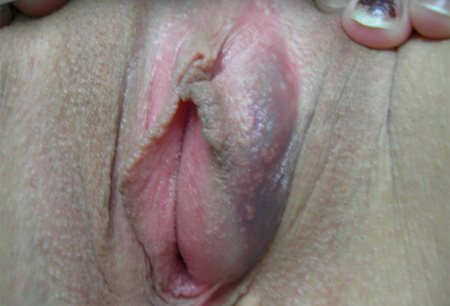Summary
Definition
History and exam
Key diagnostic factors
- vulval/perineal mass
- vulval pressure or fullness
- pain during sitting or walking
Other diagnostic factors
- fever
- dyspareunia
- vulval erythema and induration
- spontaneous rupture
Risk factors
- woman of reproductive age
- previous Bartholin's cyst/abscess
- sexual activity
- direct trauma or surgery
Diagnostic investigations
Investigations to consider
- microscopy and culture of abscess material
- biopsy of vulval lesion
Treatment algorithm
Contributors
Authors
Colleen Kennedy Stockdale, MD, MS
Professor of Obstetrics and Gynecology
University of Iowa
Iowa City
IA
Disclosures
CKS is on the Executive Board for ISSVD and is an Associate Editor for the Journal of Lower Genital Tract Disease. CKS is an author of a number of references cited in this topic.
Lori A. Boardman, MD, ScM
Professor of Obstetrics and Gynecology
University of Central Florida College of Medicine
Orlando
FL
Disclosures
LAB declares that she has no competing interests.
Acknowledgements
Dr Colleen Kennedy Stockdale and Dr Lori A. Boardman would like to gratefully acknowledge Dr Laura K. Bonebrake, a previous contributor to this topic. LKB declares that she has no competing interests.
Peer reviewers
Robert Anderson, MB, MD, FRCOG
Consultant Gynaecologist
St Michael's Hospital
Bristol
UK
Disclosures
RA declares that he has no competing interests.
Kevin Ault, MD
Associate Professor
Department of Gynecology and Obstetrics
Emory University School of Medicine
Atlanta
GA
Disclosures
KA declares that he has no competing interests.
Use of this content is subject to our disclaimer
